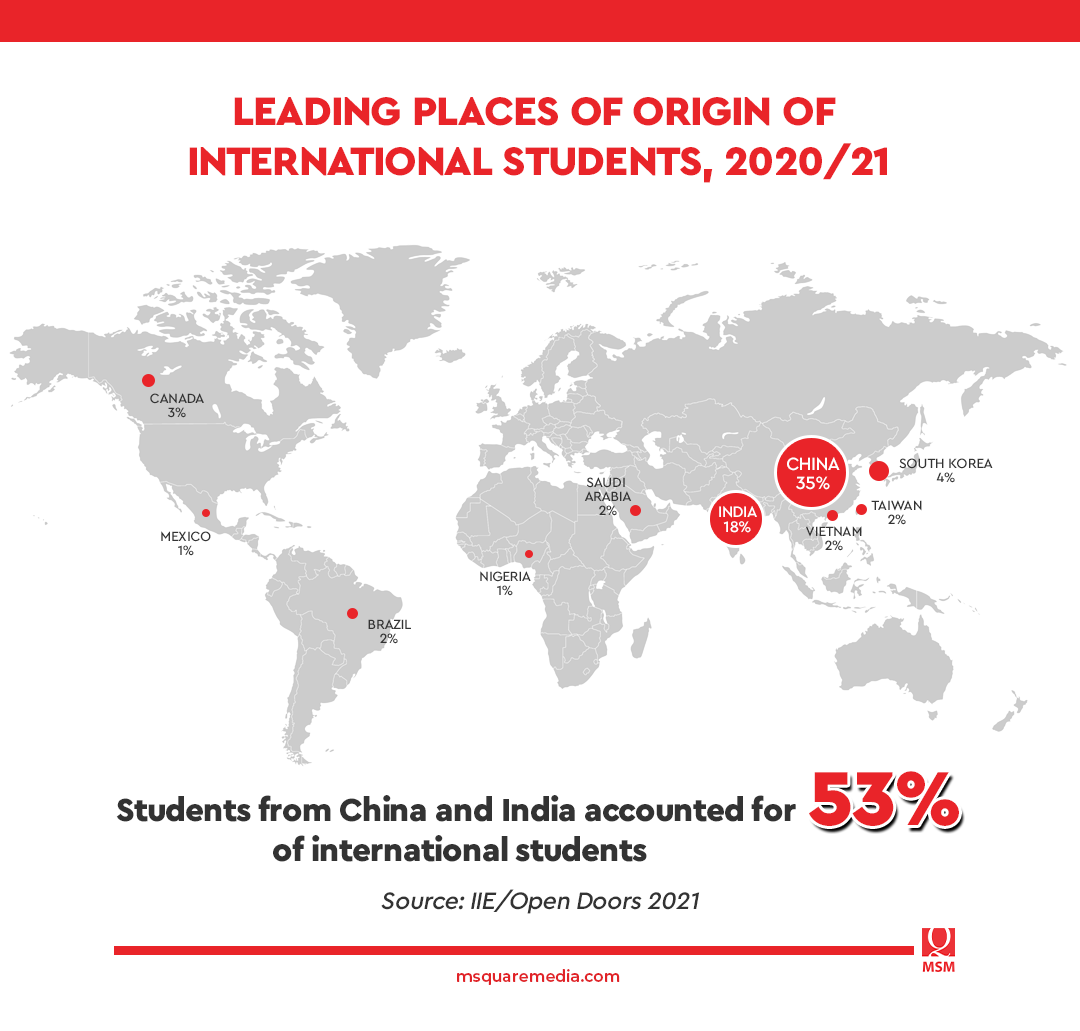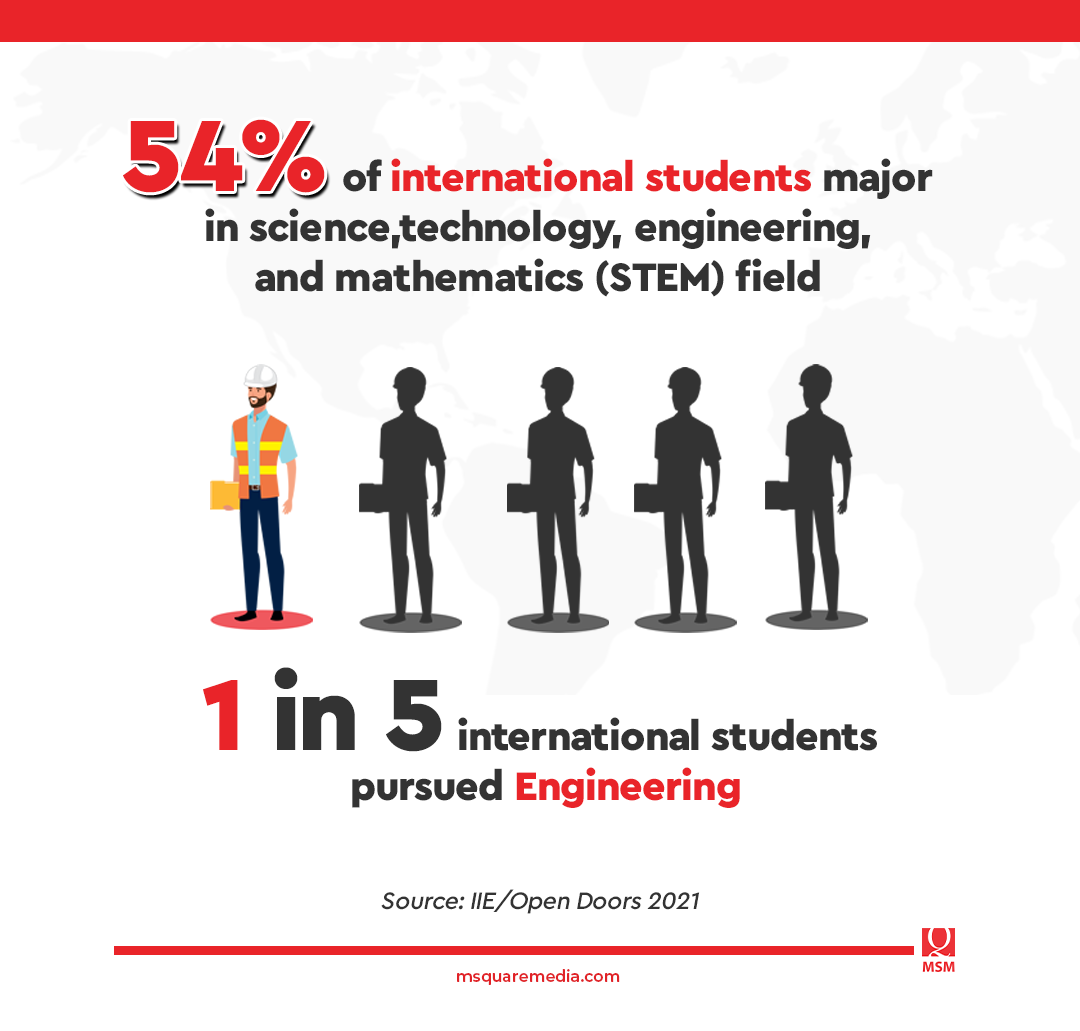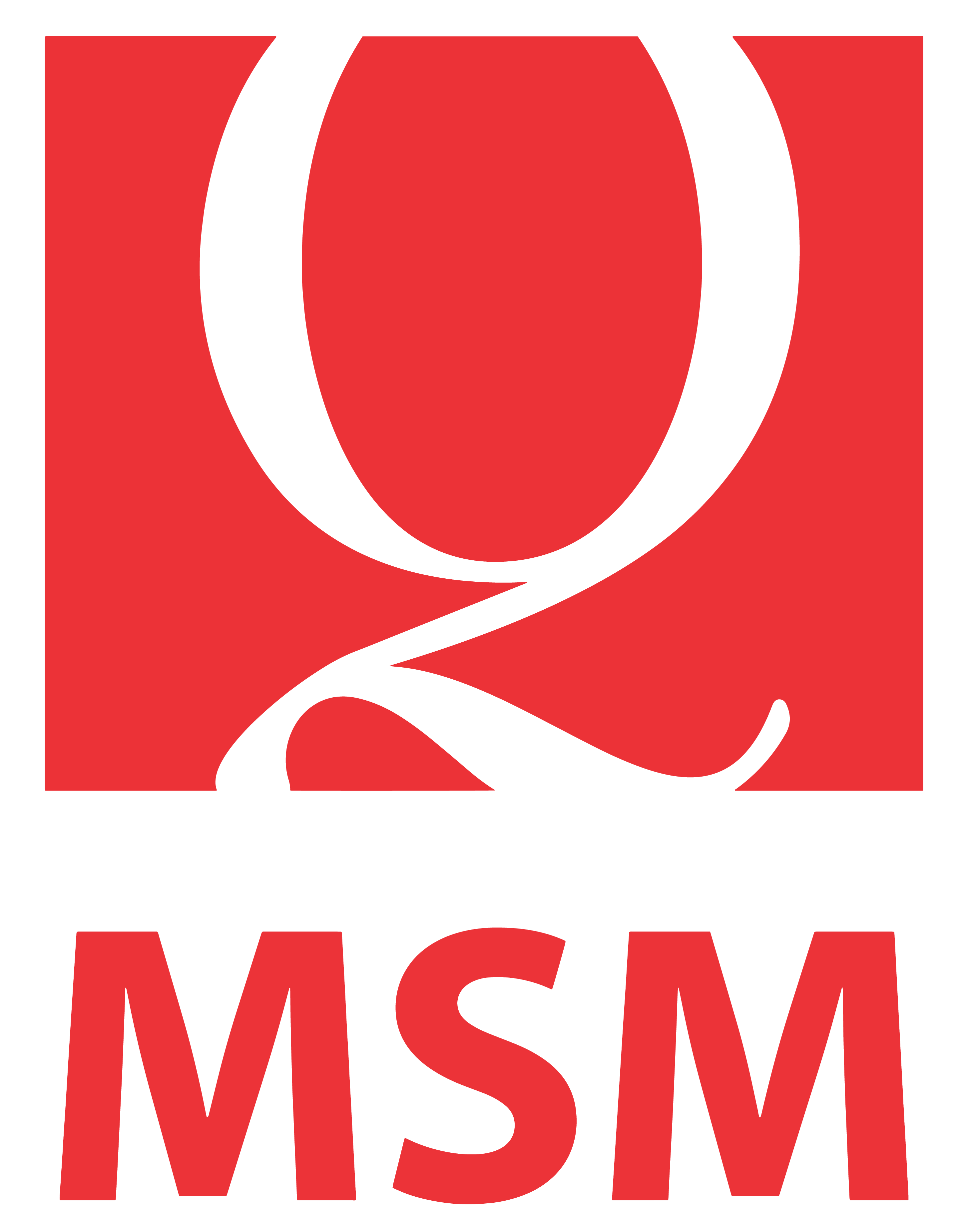Key Takeaways:
- According to the Open Doors 2021 Report, 914,095 international students pursued their studies in the U.S.
- China represented 34.7% of all international students in the US in 2020/21.
- The report showed that 54% of international students in the US in 2020/21 are currently pursuing STEM-related programs.
According to the Open Doors 2021 Report on International Educational Exchange, released by the U.S. Department of State’s Bureau of Educational and Cultural Affairs and the Institute of International Education (IIE), 914,095 international students pursued their studies at U.S. colleges and universities.
In the same report, we have seen that the top three leading source markets came from Asian countries. Chinese, Indian, and Korean students are seeking American education to achieve their career goals.

While the source markets weakened due to the COVID-19 pandemic, U.S. education retained the prominence of Chinese and Indian students. In fact, students from these Asian countries accounted for 53% of international students in the country.
As could be expected, China remains the number one source of international students in the US with more than 317,000 Chinese students enrolled in American institutions in 2020/21.
This is not surprising at all since ICEF Monitor revealed that Chinese students pursuing higher education worldwide in 2021 totaled 1,061,511 students, with 200,000 more in exchange programs.
Even in other crucial study destinations such as Australia and New Zealand, Chinese students remain the leading population in international education. And in Europe, China remains the biggest non-EU sender in the UK.
Moreover, the 2022 report of Statista showed an admirable growth of over 100% for the past 10 years. From 157,558 students in the academic year 2010/11, the total number of Chinese students increased to 317,299 in 2020/21.
Meanwhile, a robust growth of international students coming from India and South Korea is emerging. Following China, Indian students accounted for more than 160,000 or 18% of its total international student population.
“The number of students from China and India made Asia the most popular continent of origin. However, China sent fewer students in 2021 in comparison to 2020 (-33,569) while India sent more students (25,391),” the report said.
Following China and India, South Korea posed as the third dominant source country of international students in the U.S with almost 40,000 Koreans seeking education in the States.
STEM Remains Popular Among International Students
The world today, being a technology-driven time, has urged students to reskill and upskill, seeking programs that would give them a solid edge toward employability.

Thus, tech-related courses and programs are gaining prominence throughout the years. Still, from the Open Doors 2021 Report, 54% of international students in the US in 2020/21 are currently pursuing STEM-related programs, with engineering, math, and computer science as the most in-demand subjects.
A recent report also showed that around 81% of international scholars in the US enrolled in STEM programs in 2020-2021.
In the 2020 Analysis from CSET, estimating the number of Chinese STEM students in the United States, around 46,000 Chinese undergraduates, an estimated 40,000 master’s students, and an estimated 36,000 Ph.D. students in the academic year 2018/19 are taking STEM programs.
There are many reasons why this trend happened. For one, the demand for computer-related jobs is high. The US Bureau of Labor Statistics (BLS) revealed the 2019-2029 projections saying occupations in the field of STEM are expected to grow 8 percent by 2029, compared with 3.7 percent for all occupations.
Another reason we see here is the high wage earned by workers in the STEM field compared to non-STEM workers. In 2021, the median annual salary of STEM professionals, on average, amounts to 95,420 US dollars while the latter earns 40,120 US dollars—more than double in percentage.
Furthermore, students who are investing in a STEM program enjoy the benefits of a wide range of work opportunities. In the US, foreign students on an F-1 visa “can work in the US for 12 months without being sponsored by an employer, but STEM graduates can apply for a 24-month extension to their OPT, for a total of 36 months or three years.”
Conclusion
According to NAFSA, findings show that the nearly one million international students at U.S. colleges and universities contributed $28.4 billion to the U.S. economy during the 2020-2021 academic year.
It may show a considerable 27% decrease from its $39 billion economic contribution in 2020, but the good news is that the current administration is on the roll for a comeback of the international education sector.
The strategic move we saw from the US government was that the new government assured study source markets that the US, a top destination country, would restore its reputation and commitment to bettering the international education sector in the country.
The Biden administration also announced policy changes to create additional post-graduate work opportunities for international students studying STEM earlier this year.
Looking forward, we see a positive future for the US international education scene. The growth may be relaxed but the recovery is ahead of the pack, and that definitely is good news. (MAY ARTHUR)

MAY ARTHUR
MSM Vice President
May is a seasoned international education business executive with almost 30 years of experience. She has held several leadership roles dedicated to growing and retaining the international student population at partner universities.
Her broad areas of expertise include business development, organizational leadership, strategic planning, and global operations. She excels at developing and supporting partnerships with universities and managing global recruitment initiatives.
She has also been an active member of several renowned industry organizations including NAFSA: Association of International Educators, English USA, American International Recruitment Council (AIRC), and the Association of International Education Administrators (AIEA).
Sources:
- Machovec, Christine. 2022. Women and Girls in Growing STEM Jobs. U.S. Department of Labor Blog. Retrieved from https://blog.dol.gov/2022/02/10/women-and-girls-in-growing-stem-jobs#:~:text=As%20a%20group,in%20May%202020.%20%C2%A0
- Mohamed, J. 2022. Interest in STEM-certified programmes in US climbing among int’l students. Study International. Retrieved from https://www.studyinternational.com/news/stem-fields-intl-mba-candidates/
- 2022. Biden Plans New Effort to Retain International Science and Tech Students. US News. Retrieved from https://www.usnews.com/news/us/articles/2022-01-21/biden-plans-new-effort-to-retain-international-science-and-tech-students
- 2022. Employment in STEM occupations. U.S. Bureau of Labor Statistics. Retrieved from https://www.bls.gov/emp/tables/stem-employment.htm
- 2022. Indian Students Up 12% In A Year, Chinese Students Down 8%: US Report. NDTV. Retrieved from https://www.ndtv.com/indians-abroad/indian-students-in-us-up-12-in-a-year-chinese-students-down-8-us-report-2867554
- 2022. International student numbers in Canada rebounded close to pre-pandemic levels in 2021. ICEF Monitor. Retrieved from https://monitor.icef.com/2022/03/international-student-numbers-in-canada-rebounded-close-to-pre-pandemic-levels-in-2021/#:~:text=China%20remains%20the%20second%2Dlargest,part%20because%20of%20the%20pandemic
- C. Textor. 2021. Number of Chinese students in the U.S. 2010/11-2020/21. Statista. Retrieved from https://www.statista.com/statistics/372900/number-of-chinese-students-that-study-in-the-us/
- Ip, C. 2021. Chinese graduates lament Western degrees no longer a fast track for top jobs. South China Morning Post. Retrieved from https://www.scmp.com/economy/china-economy/article/3157485/chinese-graduates-lament-western-degrees-no-longer-fast-track
- Silver, L. 2021. Amid pandemic, international student enrollment at U.S. universities fell 15% in the 2020-21 school year. Pew Research Center. Retrieved from https://www.pewresearch.org/fact-tank/2021/12/06/amid-pandemic-international-student-enrollment-at-u-s-universities-fell-15-in-the-2020-21-school-year/
- Zilberman et. al. 2021. Why computer occupations are behind strong STEM employment growth in the 2019–29 decade. U.S. Bureau of Labor Statistics. Retrieved from https://www.bls.gov/opub/btn/volume-10/why-computer-occupations-are-behind-strong-stem-employment-growth.htm#:~:text=The%20U.S.%20Bureau%20of%20Labor,3.7%20percent%20for%20all%20occupations
- 2021. China Remains the Top Sender of International Students to the United States in 2020/2021. U.S. Embassy & Consulates in China. Retrieved from https://china.usembassy-china.org.cn/china-remains-the-top-sender-of-international-students-to-the-united-states-in-2020-2021/#:~:text=According%20to%20the%20Open%20Doors,students%20in%20the%20United%20States
- Bollinger, L. 2020. Bollinger Calls on Biden to End the Trump Administration’s Assault on the International Exchange of Ideas. Columbia News. Retrieved from https://news.columbia.edu/news/bollinger-calls-biden-end-trump-administrations-assault-international-exchange-ideas
- Jacob Feldgoise and Remco Zwetsloot, “Estimating the Number of Chinese STEM Students in the United States” (Center for Security and Emerging Technology, October 2020). Retrieved from https://cset.georgetown.edu/publication/estimating-the-number-of-chinese-stem-students-in-the-united-states/#:~:text=Across%20those%20STEM%20fields%2C%20there,half%20at%20the%20graduate%20level.
- Pamuk, H. 2020. U.S. revokes more than 1,000 visas of Chinese nationals, citing military links. Reuters. Retrieved from https://www.reuters.com/article/us-usa-china-visas-students/u-s-revokes-more-than-1000-visas-of-chinese-nationals-citing-military-links-idUSKBN26039D
- The Power of International Education. IIE. Retrieved from https://www.iie.org/
- The Chinese Study Abroad Market. educationfair.nl. Retrieved from https://www.educationfair.nl/market-reports/asia/china/#:~:text=With%20a%20population%20of%201,in%202021%3A%20a%20staggering%201%2C061%2C511.
- Rebuilding and Restoring International Education Leadership. NAFSA. Retrieved from https://www.nafsa.org/policy-and-advocacy/policy-priorities/rebuilding-and-restoring-international-education-leadership

